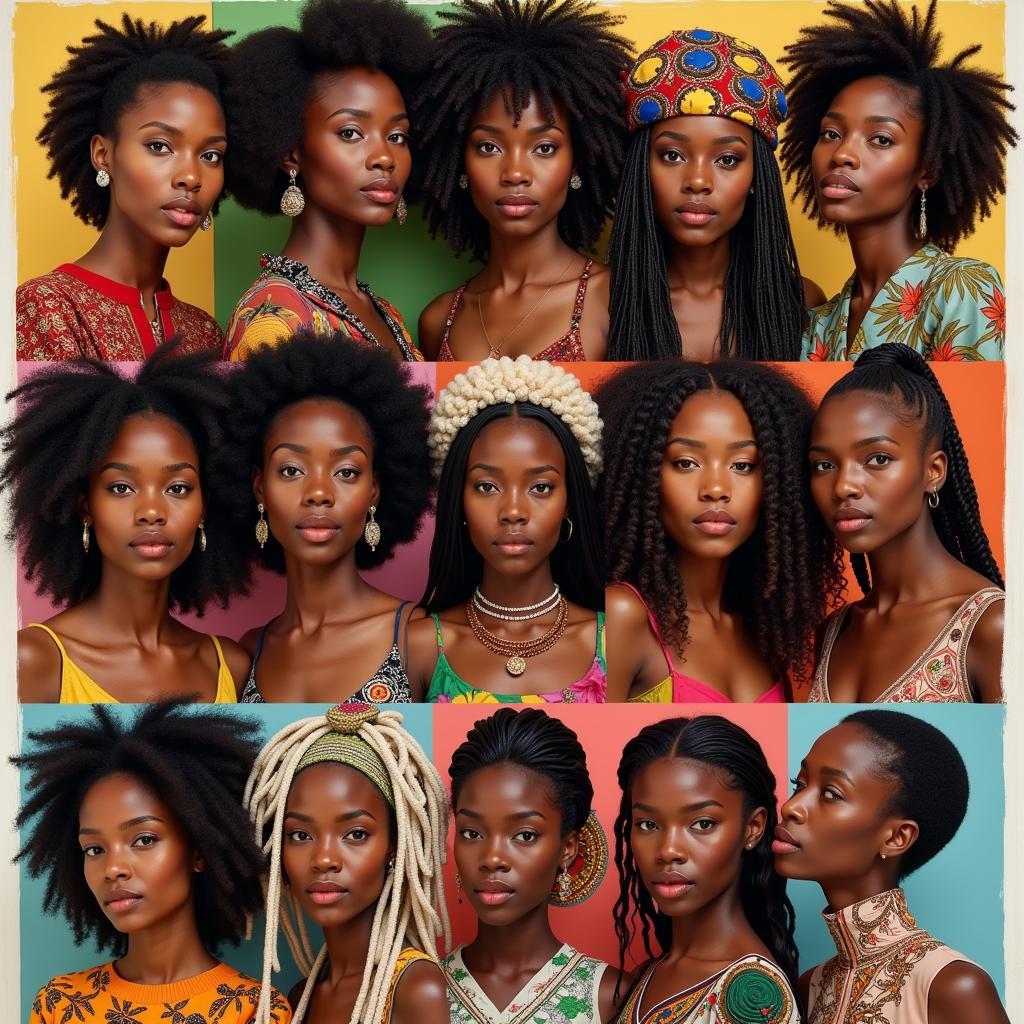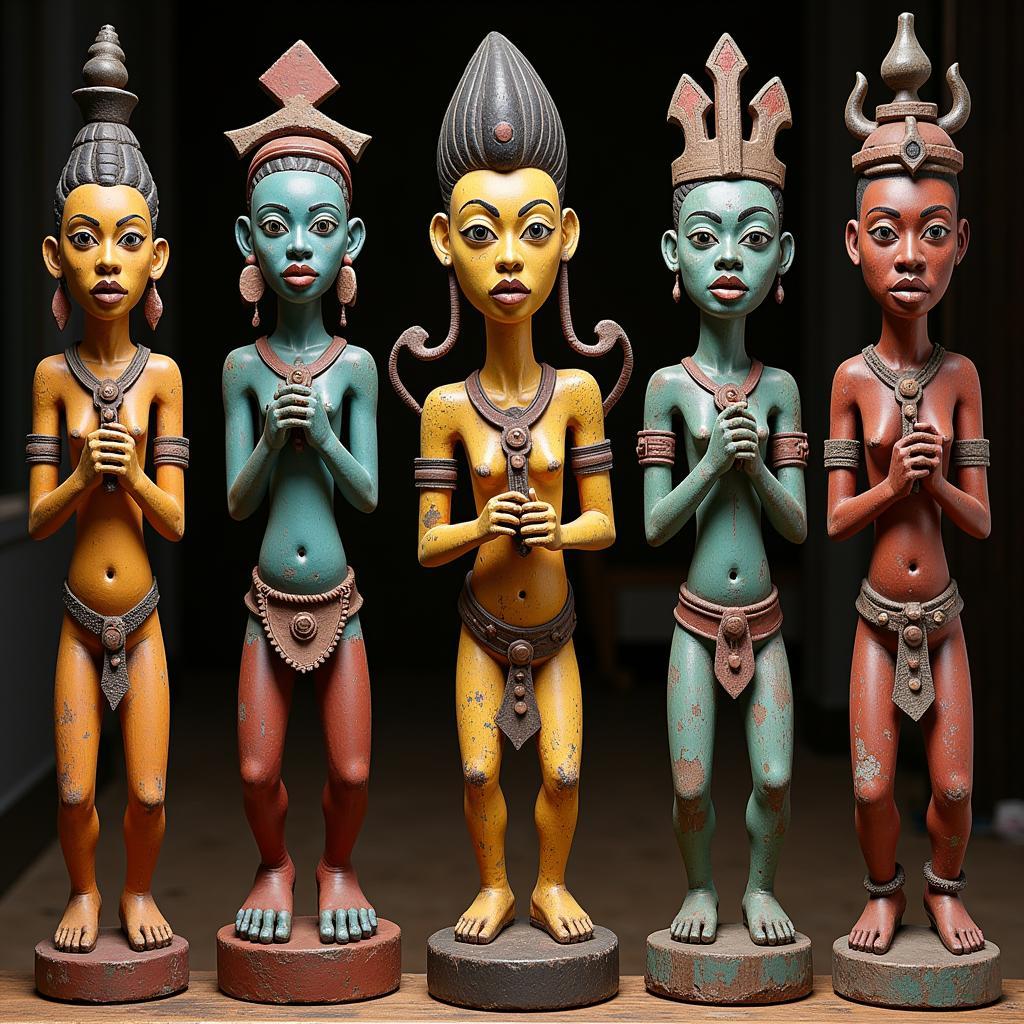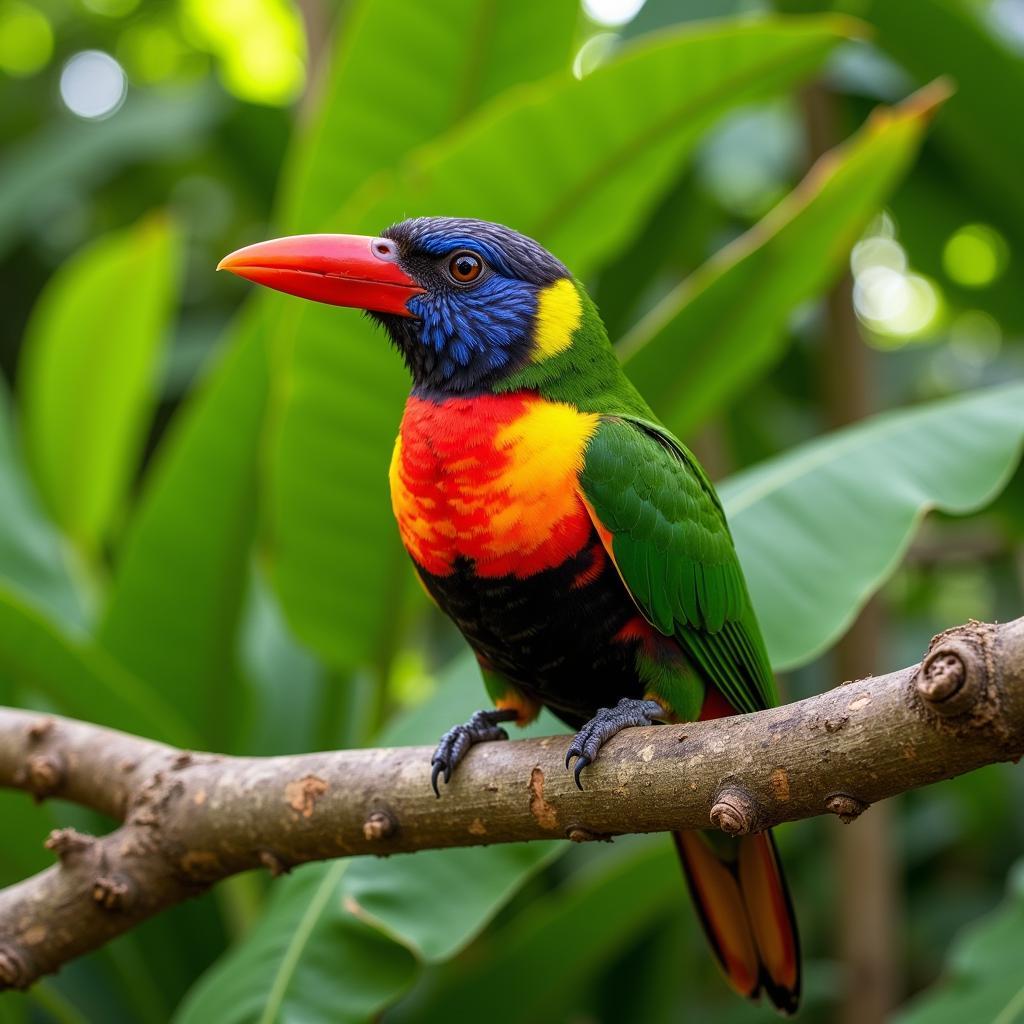Uncovering the Beauty and Significance of African Hides
African Hides, a testament to the continent’s rich natural heritage, have played a vital role in African societies for centuries. These durable and versatile materials, sourced from animals like cattle, goats, and sheep, have been integral to traditional practices, craftsmanship, and cultural expression. From clothing and shelter to ritualistic objects and musical instruments, African hides embody a fascinating narrative of resourcefulness, artistry, and cultural significance.
The Enduring Legacy of African Hides in Traditional Practices
For generations, African communities have ingeniously utilized hides to meet their practical needs. African bundles, crafted from meticulously treated hides, served as resilient containers for storage and transportation. These bundles, often adorned with intricate designs, reflect the aesthetic sensibilities of different ethnic groups. The hides of larger animals, like cattle, provided sturdy materials for constructing shelters, shielding communities from the elements.
Beyond their practical applications, African hides hold deep cultural and spiritual meaning in many societies. They are frequently incorporated into ceremonial attire, signifying social status, lineage, or spiritual connection. The hides of certain animals, often imbued with symbolic significance, are used in rituals, dances, and masquerades, connecting individuals to their ancestral heritage and the spiritual realm.
African Hides: Transforming from Raw Material to Artistic Canvas
The artistry displayed in transforming African hides into objects of beauty and utility is a testament to the continent’s rich artistic traditions. Skilled artisans, through generations-old techniques, transform hides into a diverse array of products. Tanning, a crucial step in processing hides, involves intricate methods of cleaning, stretching, and treating the hides to enhance durability and suppleness.
 Traditional hide tanning in an African village
Traditional hide tanning in an African village
Once tanned, the hides become canvases for artistic expression. Intricate patterns are etched, embossed, or painted onto the surface, transforming the hides into works of art. From intricately beaded garments to elaborately carved masks, African hides showcase the remarkable skill and artistic vision of the continent’s artisans.
The Modern Relevance of African Hides
In a world increasingly focused on sustainability and ethical sourcing, African hides offer a compelling alternative to mass-produced materials. The durability and natural beauty of hides make them ideal for crafting high-quality leather goods that age gracefully. Recognizing the economic potential of this resource, initiatives promoting sustainable hide and skin production are gaining traction across Africa. These endeavors aim to empower local communities, preserve traditional knowledge, and minimize environmental impact.
 Contemporary African leather goods
Contemporary African leather goods
Conclusion
African hides, far from being mere byproducts, are integral to the continent’s cultural heritage and economic potential. From their role in traditional practices and artistry to their emergence as a sustainable material in contemporary design, African hides continue to weave a compelling narrative of resourcefulness, creativity, and enduring cultural significance. As we delve deeper into the world of African hides, we uncover a fascinating tapestry woven with history, art, and a deep connection to the natural world.
FAQs about African Hides
1. What types of animals are commonly used for African hides?
The most commonly used animals for African hides include cattle, goats, sheep, and in some regions, zebras and antelopes.
2. Are African hides environmentally friendly?
When sourced and processed responsibly, African hides can be an environmentally friendly material. They are biodegradable and offer a sustainable alternative to synthetic materials.
3. What are some modern applications of African hides?
African hides are used to create a wide range of contemporary products, including high-quality leather goods, footwear, home décor items, and fashion accessories.
4. How can I ensure I am purchasing ethically sourced African hides?
Look for products from companies that prioritize transparency and ethical sourcing practices. Supporting initiatives that empower local communities and promote sustainable hide production is crucial.
5. Where can I learn more about traditional African hide processing techniques?
Several organizations and cultural centers across Africa offer workshops and demonstrations on traditional hide processing methods. You can also find valuable information in books and documentaries on African art and culture.
For more information on African culture and traditions, you can explore our articles on African cultural wear and African baby carriers. If you are interested in the agricultural aspects, you can read about African Boer farms.
Need help or have more questions? Contact us at:
Phone: +255768904061
Email: kaka.mag@gmail.com
Address: Mbarali DC Mawindi, Kangaga, Tanzania.
Our customer care team is available 24/7 to assist you.





